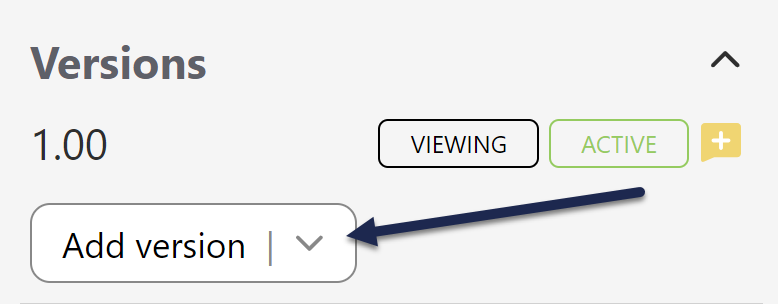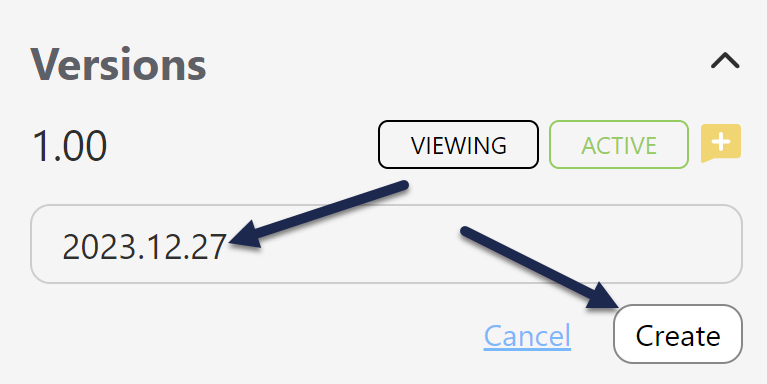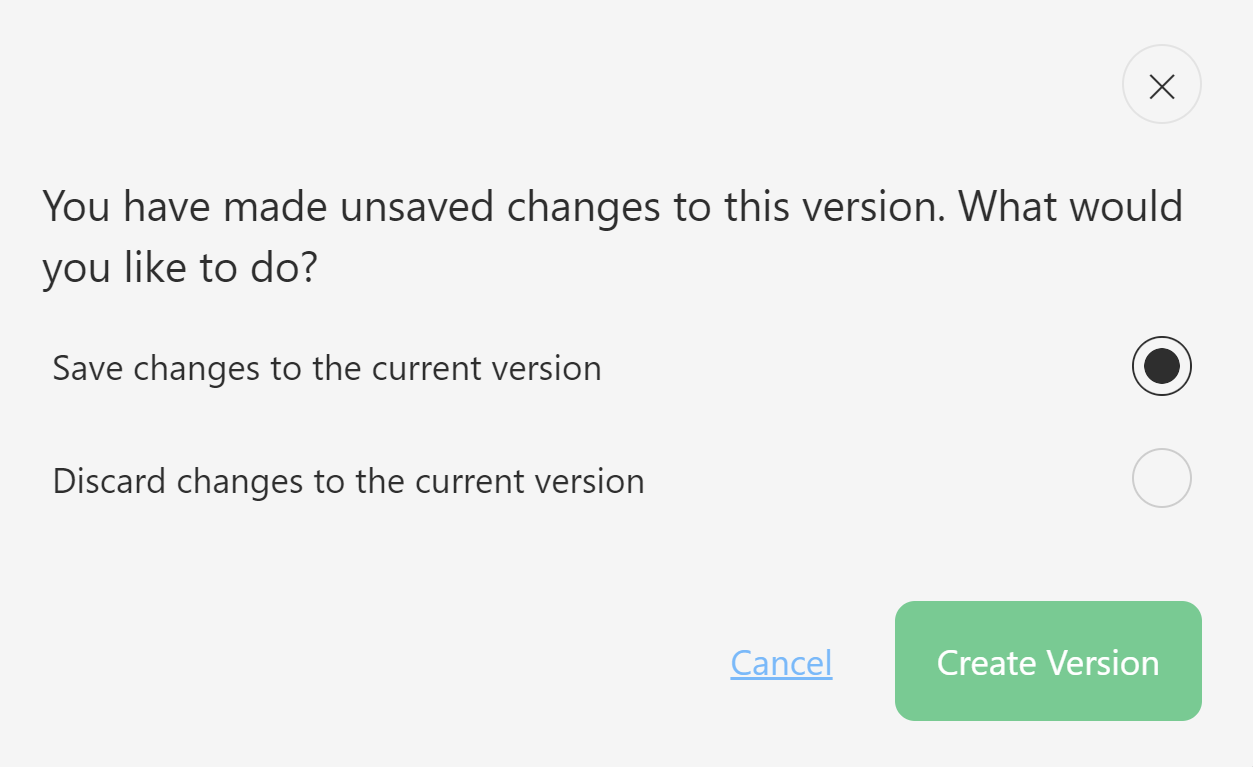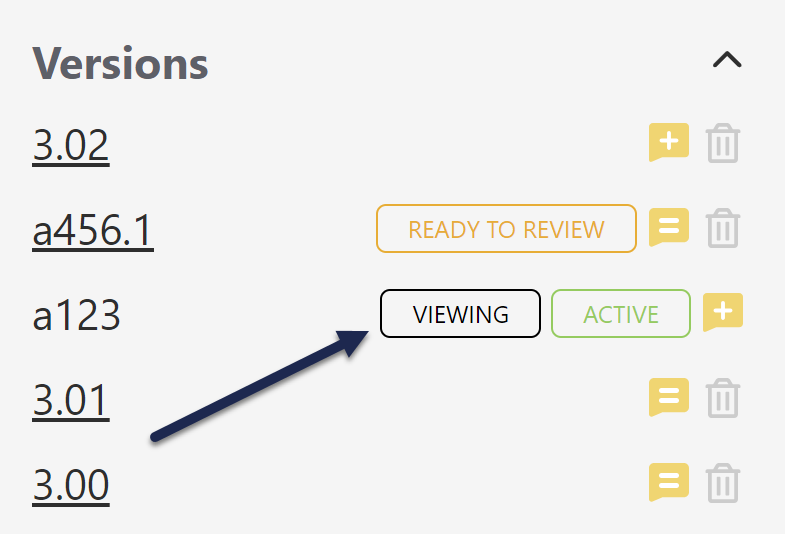You can create versions in articles and in custom content categories to stage new content, get review before those changes go live, or keep a detailed history of changes made to your content.
Authors with the default Editor or Writer role can create both article versions and custom content category versions. If you're using a custom role:
- To create article versions, you'll need the Articles custom author role permission to Create new versions of articles.
- To create custom content category versions, you'll need the Categories custom author role permission to Edit categories.
To create a version for an article or custom content category:
- Open the article or custom content category in the editor.
- In the Versions section near the top of the righthand column, select Add version.
 Select Add version to begin.
Select Add version to begin. - From the Add version dropdown, select the version numbering convention you'd like to use.
- Minor (+0.01) creates an automatically numbered major version from the current active version and any other minor versions. If you select this option, you'll immediately be taken to the next step.
- If you only have version 1.00, Minor creates a new version numbered 1.01.
- If you have version 1.02, Minor creates a new version numbered 1.03.
- Major (+1.0) creates an automatically numbered major version from the current active version and any other major versions. If you select this option, you'll immediately be taken to the next step.
- If you only have version 1.00, Major creates a new version numbered 2.00.
- If you have version 2.00, Major creates a new version numbered 3.00.
- Custom allows you to manually add your own version number. We like to use dates for ours! If you select this option, a text box appears. Enter your custom version number in the text box and select Create.
 Enter your custom version number and select Create.
Enter your custom version number and select Create.
- Minor (+0.01) creates an automatically numbered major version from the current active version and any other minor versions. If you select this option, you'll immediately be taken to the next step.
- If you had no unsaved changes in the editor when you began creating your new version, the new version is created from the current active version and the editor will refresh to open to that new version.
- If you had any unsaved changes in the editor when you began creating your new version, a modal opens asking you how you'd like to proceed:
 Sample unsaved changes pop-up in article editor version creation flow
Sample unsaved changes pop-up in article editor version creation flow
- You can choose to:
- Save changes to the current version: If you select this option and then Create Version, your edits in the current version will be saved before the new version is created. If you were editing the current active version, you'll see those edits reflected in both the current version and the newly-created version. (This option is selected by default.)
- Discard changes to the current version: If you select this option and then Create Version, your edits in the current version will be discarded.
- Cancel: This option will cancel the creation of the new version and return you to your unsaved changes in the editor. This can be a good option if you want to copy the current changes without saving them to the current version.
- Once you make your selection and choose Create Version, the new version is created from the current active version and the editor will refresh to open to that new version.
You can tell which version you're currently viewing by looking for the black Viewing badge in the versions list:
 Sample Viewing badgeWith your new version created, you can begin making edits to that version.
Sample Viewing badgeWith your new version created, you can begin making edits to that version.You can toggle between different versions by selecting the version number. All versions are displayed in reverse chronological order with the most recent at the top. Versions with version notes have a yellow notes icon to the right; versions without notes have a yellow icon with a white plus sign. Select the icon to view the notes.
You can make as many changes to the new version as you'd like. They won't show until you activate this version.




